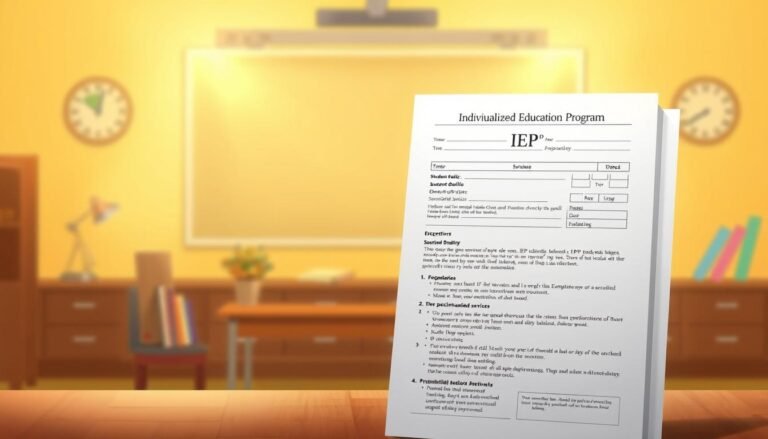
From Diagnosis to Intervention: The Ultimate Journey of Children with Language-Based Learning Disabilities
Introduction
Imagine watching your child struggle to express themselves—the frustration in their eyes, the silent tears when they can’t find the right words. Language-based learning disabilities (LBLDs) affect millions of children, leading not just to academic challenges but also to emotional turmoil. In this article, titled From Diagnosis to Intervention: The Ultimate Journey of Children with Language-Based Learning Disabilities, we will explore the critical steps that parents, educators, and specialists can take to guide children from the initial diagnosis through effective intervention strategies. By understanding this journey, we can empower children to achieve their fullest potential.
Understanding Language-Based Learning Disabilities
What Are Language-Based Learning Disabilities?
Language-based learning disabilities encompass a range of difficulties that affect a child’s ability to listen, speak, read, and write. These disabilities can manifest in various forms, including dyslexia, auditory processing disorder, and specific language impairment.
Prevalence of LBLDs
Research shows that approximately 5-10% of school-aged children experience language-based learning disabilities. This statistic indicates a pressing need for awareness and effective intervention strategies.
Case Study: Sam’s Story
Take Sam, a bright child who loves math and science but struggles with reading. At the age of 8, his teachers noticed that while he could solve complex equations, he stumbled over simple words and had difficulty understanding written instructions. This observation led his parents to seek a comprehensive evaluation, revealing an underlying reading disability.
Analysis
Sam’s story exemplifies how LBLDs often go undetected until they significantly affect a child’s academic performance. Early diagnosis is crucial, paving the way for targeted intervention.
From Diagnosis to Understanding: The Initial Steps
Recognizing the Signs
Parents and teachers play a critical role in identifying potential LBLDs. Common signs include:
- Difficulty in phonemic awareness
- Trouble with grammar and vocabulary
- Discrepancies between verbal and written skills
Professional Assessment and Diagnosis
Once signs are recognized, the next step is getting a professional assessment. This typically involves:
- Parent and Teacher Interviews: Gathering insights on the child’s performance in various settings.
- Standardized Testing: Evaluating cognitive and language abilities.
- Observational Assessments: Understanding how the child interacts in structured and unstructured environments.
The Importance of a Multidisciplinary Approach
Involving speech-language pathologists (SLPs), psychologists, and special educators ensures a holistic evaluation. Each professional brings a unique perspective, leading to a more accurate diagnosis.
Case Study: Lily’s Assessment
Lily was assessed by a team of professionals after her teacher noted her struggles with reading comprehension. The evaluation revealed a specific language impairment, helping the team craft a tailored intervention plan.
Analysis
Lily’s case highlights how a multi-faceted approach can provide a clearer understanding of a child’s challenges, which is vital for effective intervention.
From Diagnosis to Intervention: Crafting the Right Plan
Individualized Education Plans (IEPs)
An IEP is a structured plan that outlines specific educational goals, services, and accommodations for a child’s unique needs. Key components include:
- Specific Goals: Clearly defined learning objectives tailored to the child.
- Support Services: Including speech therapy, tutoring, or classroom accommodations.
- Progress Monitoring: Regular assessments to track improvement.
Evidence-Based Interventions
Intervention strategies that are backed by research improve the chances of success. Some effective approaches include:
- Direct Instruction: A structured method emphasizing clear, systematic teaching.
- Multi-sensory Learning: Engaging multiple senses in the learning process helps reinforce concepts.
- Assistive Technology: Tools like speech-to-text software can provide critical support.
Case Study: Jake’s Intervention Plan
Jake’s IEP included direct instruction in phonics combined with multi-sensory learning techniques. Over time, his reading improved significantly, and he gained confidence in his abilities.
Analysis
Jake’s success story reminds us that individualized intervention plans, shaped by evidence-based practices, can lead to meaningful progress for children with LBLDs.
The Role of Supportive Environments
Home Support
Creating a supportive home environment is crucial. Parents can help by:
- Engaging in daily reading activities
- Encouraging expressive language through discussions
- Using visual aids to reinforce learning
School Support
Teachers play an essential role in fostering a supportive academic environment. Strategies include:
- Differentiated instruction tailored to individual needs.
- Creating a safe space for children to express themselves without judgment.
- Collaborating with SLPs and special educators to implement effective teaching methods.
Case Study: Mia’s Home and School Collaboration
Mia’s teachers worked closely with her family to implement daily reading practices at home, which complemented the phonics strategies used in class. This cohesion proved beneficial for Mia’s progress.
Analysis
Mia’s case exemplifies the synergy between home and school support, enhancing the effectiveness of interventions for children with LBLDs.
Emotional and Social Impacts of LBLDs
Addressing Emotional Needs
Children with language-based learning disabilities often face low self-esteem and anxiety. It’s important to:
- Foster a growth mindset, encouraging children to view challenges as opportunities for learning.
- Provide emotional support through counseling or therapy.
Building Social Skills
Social skills can lag behind if a child struggles with language. Parents and educators can help by:
- Encouraging participation in group activities.
- Providing structured opportunities for social interaction.
- Teaching conversational skills through role-playing exercises.
Case Study: Oliver’s Emotional Journey
Oliver struggled with his self-esteem due to his inability to keep up with peers. Through consistent emotional support and skill-building exercises, he slowly developed confidence and social connections.
Analysis
Oliver’s progress illustrates that emotional and social support is essential for holistic development in children with LBLDs, ensuring they feel valued and understood.
Progress Monitoring and Adjustment
Continuous Assessment
Regular evaluations help determine if an intervention is effective. Utilizing tools such as:
- Progress reports from teachers.
- Observations and check-ins with therapists.
- Standardized testing on a biannual basis.
Flexibility in Intervention Strategies
Sometimes, initial strategies may need adjustment. It’s essential to remain flexibility and responsive to what works best for the child. Strategies may evolve based on the child’s growth and changing needs.
Case Study: Emily’s Adjusted Plan
Initially, Emily’s intervention focused heavily on reading. However, as she progressed, her team shifted their emphasis to include writing and verbal communication skills, leading to further improvements.
Analysis
Emily’s case highlights the necessity for adaptability in intervention plans, reinforcing that children are not static in their development and may require varying support over time.
The Role of Technology in Intervention
Assistive Technology
Advancements in technology provide innovative tools that can aid children with LBLDs, including:
- Text-to-Speech Software: Helps with reading comprehension.
- Online Reading Programs: Engages children with fun, interactive exercises.
- Speech Recognition Software: Supports writing by allowing verbalization of thoughts.
Benefits of Technological Interventions
Integrating technology can make learning more engaging and tailored to a child’s needs.
Case Study: Noah’s Technological Advantage
Noah, an 11-year-old with dyslexia, used a text-to-speech program that allowed him to access grade-level materials. This advancement significantly improved his reading ability and academic performance.
Analysis
Noah’s positive experience demonstrates how technology can act as a bridge to academic success for children facing language-based learning disabilities.
Parent and Community Involvement
Building a Support Network
Parents can benefit from connecting with other families facing similar challenges. Some ways to foster connections include:
- Joining support groups.
- Attending workshops and webinars.
- Engaging with local advocacy organizations.
Promoting Awareness in the Community
Raising awareness about language-based learning disabilities can create a more inclusive environment. Strategies include:
- Hosting community forums.
- Collaborating with schools to provide educational seminars.
- Engaging in social media campaigns.
Case Study: Community Engagement in Sarah’s Journey
Sarah’s parents organized a local workshop on LBLDs, leading to greater community understanding and support. This initiative helped destigmatize her struggles and encouraged others to seek help.
Analysis
Sarah’s community engagement underscores the importance of social support systems in the lives of children with LBLDs, reinforcing a collective effort towards inclusion and understanding.
Conclusion
The journey from diagnosis to intervention for children with language-based learning disabilities is both challenging and rewarding. By understanding the intricacies involved in this path—recognition, professional assessment, emotional support, and adaptive strategies—we pave the way for meaningful progress. Each child’s journey is unique, and with the right supports, they can flourish.
It’s crucial for parents, educators, and communities to remain vigilant, proactive, and compassionate. Let’s continue working together to ensure that every child with a language-based learning disability has the support they need to succeed.
FAQs
1. What are the common types of language-based learning disabilities?
Language-based learning disabilities include dyslexia, specific language impairment, and auditory processing disorder.
2. How can I tell if my child has a language-based learning disability?
Signs may include difficulty with reading, spelling, understanding instructions, and varying levels of verbal and written communication skills.
3. What is an IEP, and how can it help my child?
An Individualized Education Plan (IEP) is a customized educational framework that outlines specific learning goals, services, and accommodations tailored to the child’s needs.
4. How can I support my child at home?
You can engage in daily reading, encourage expressive language, and create a positive learning environment with visual aids.
5. What role does technology play in interventions for LBLDs?
Assistive technology provides tools like text-to-speech and speech recognition software that can significantly aid children with LBLDs in their learning process.
6. How can I connect with other parents of children with LBLDs?
Look for local support groups, online communities, and workshops dedicated to language-based learning disabilities to find connections and resources.
By fostering understanding, awareness, and community, we can collectively ensure children with language-based learning disabilities have a brighter, more equipped future.
















